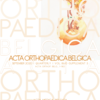Complications after plating of articular pilon fractures : a comparison of anteromedial, anterolateral, and medial plating
Pilon fractures ; ORIF ; anteromedial plate ; complications
Published online: Jun 12 2021
Abstract
The complication rate following tibial pilon surgery continues to be high. Different plating designed has been developed to obtain stability and avoiding bulky implants. Our purpose is to determine differences in complications according to plate type. A retrospective case series of 102 fractures was divided into three groups. Group I : 3.5 mm LCP anterolateral distal tibia plate placed anteromedially(30 fractures), with 73.4% treated with an anteromedial approach and 26.6% with an anterior approach ; Group II :3.5 mm LCP anterolateral distal tibia plate (26 fractures), with 76.9% treated with an anterolateral approach and 23.1% with an anterior approach ; Group III : 3.5 mm LCP low bend medial distal tibia plate (46 fractures) with 100% treated with an anteromedial approach. Nonunion did not occur in group I patients (P=0.038), with statistically significant differences found regarding occurrence of nonunion and open fractures (P=0.022). A greater percentage of group II patients had osteoarthritis (P=0.006). Group I patients had fewer reoperations, though results were not significant. Tibial pilon fractures treated with an anterolateral plate in anteromedial position had a lower complication rate and risk of nonunion.
